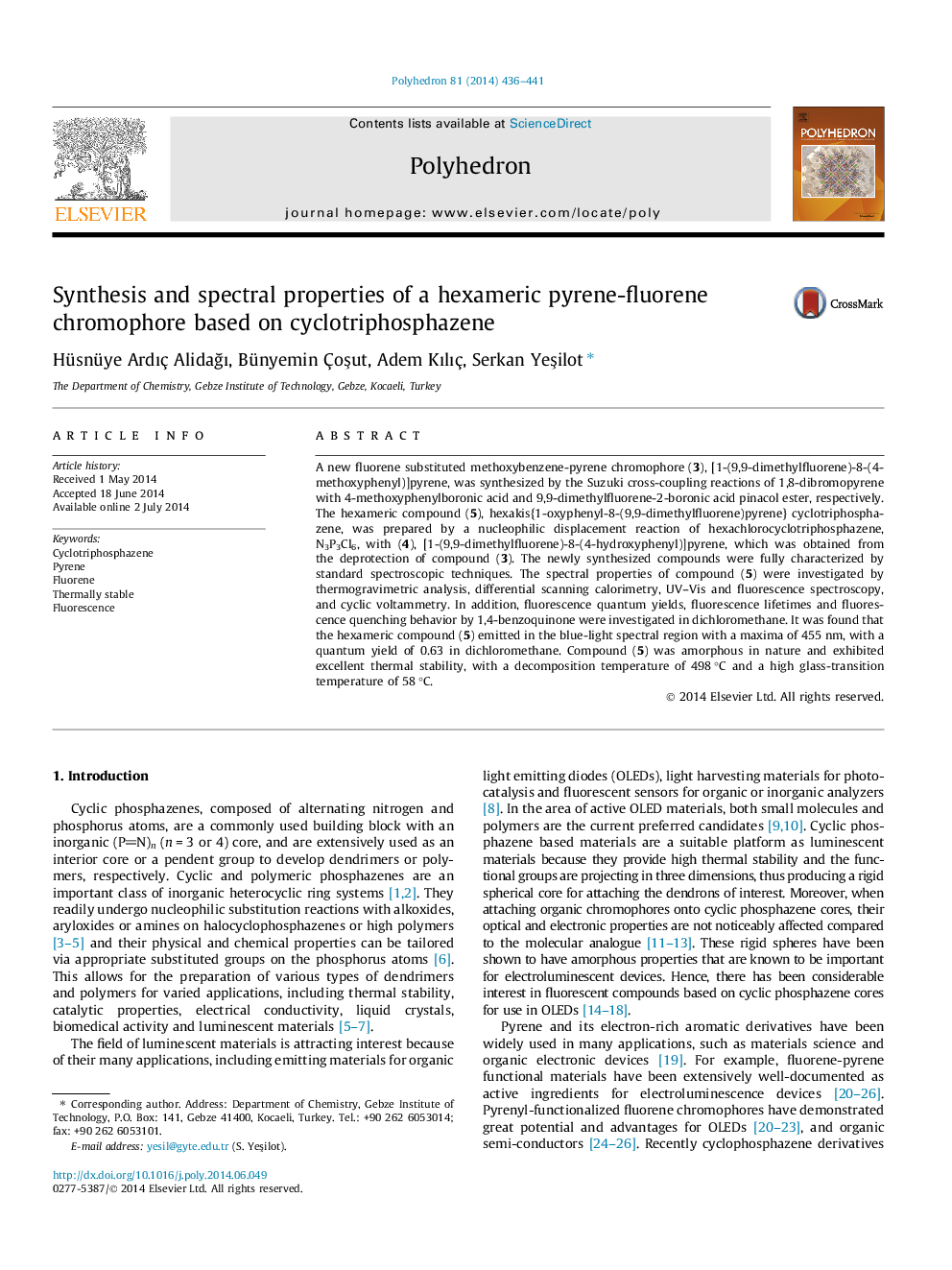| کد مقاله | کد نشریه | سال انتشار | مقاله انگلیسی | نسخه تمام متن |
|---|---|---|---|---|
| 1334450 | 1500258 | 2014 | 6 صفحه PDF | دانلود رایگان |
A new fluorene substituted methoxybenzene-pyrene chromophore (3), [1-(9,9-dimethylfluorene)-8-(4-methoxyphenyl)]pyrene, was synthesized by the Suzuki cross-coupling reactions of 1,8-dibromopyrene with 4-methoxyphenylboronic acid and 9,9-dimethylfluorene-2-boronic acid pinacol ester, respectively. The hexameric compound (5), hexakis{1-oxyphenyl-8-(9,9-dimethylfluorene)pyrene} cyclotriphosphazene, was prepared by a nucleophilic displacement reaction of hexachlorocyclotriphosphazene, N3P3Cl6, with (4), [1-(9,9-dimethylfluorene)-8-(4-hydroxyphenyl)]pyrene, which was obtained from the deprotection of compound (3). The newly synthesized compounds were fully characterized by standard spectroscopic techniques. The spectral properties of compound (5) were investigated by thermogravimetric analysis, differential scanning calorimetry, UV–Vis and fluorescence spectroscopy, and cyclic voltammetry. In addition, fluorescence quantum yields, fluorescence lifetimes and fluorescence quenching behavior by 1,4-benzoquinone were investigated in dichloromethane. It was found that the hexameric compound (5) emitted in the blue-light spectral region with a maxima of 455 nm, with a quantum yield of 0.63 in dichloromethane. Compound (5) was amorphous in nature and exhibited excellent thermal stability, with a decomposition temperature of 498 °C and a high glass-transition temperature of 58 °C.
A new fluorene substituted methoxybenzene-pyrene chromophore (3) and its hexameric cyclic phosphazene derivative (5) were synthesized. The spectral properties of the hexameric structure were investigated by thermogravimetric analysis (TGA), differential scanning calorimetry (DSC), UV–Vis, fluorescence spectroscopy and cyclic voltammetry (CV).Figure optionsDownload as PowerPoint slide
Journal: Polyhedron - Volume 81, 15 October 2014, Pages 436–441
